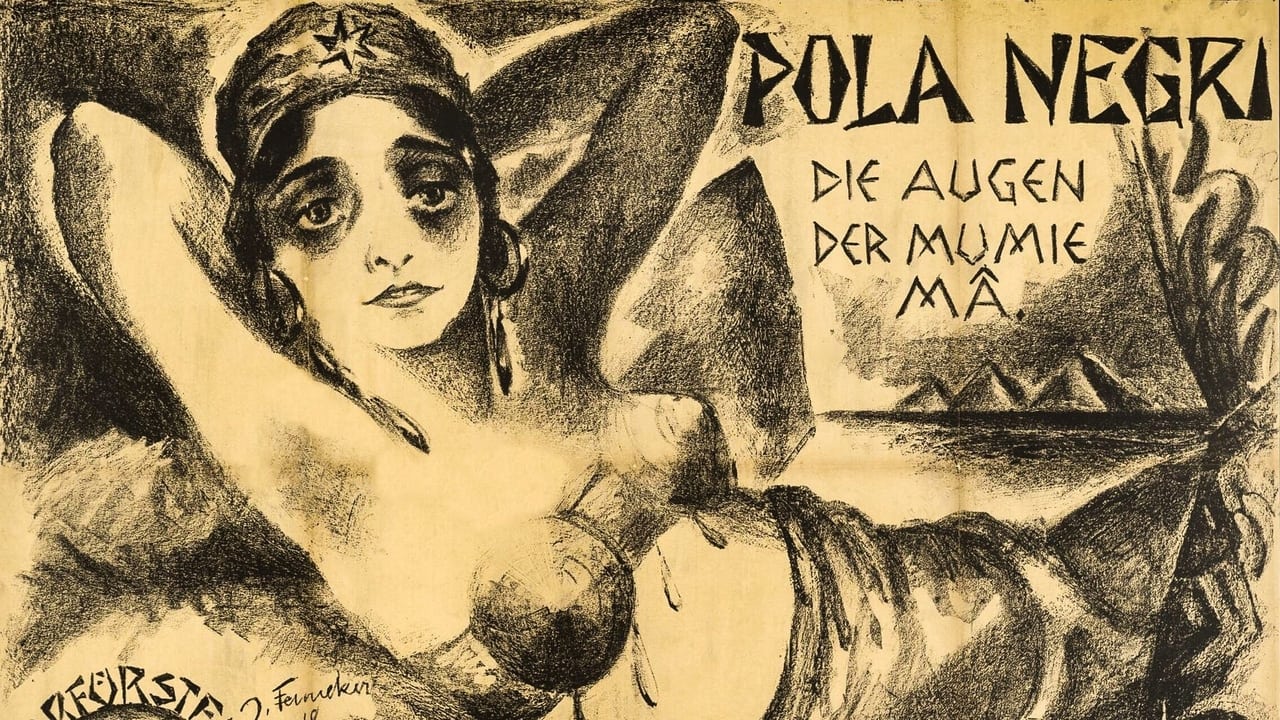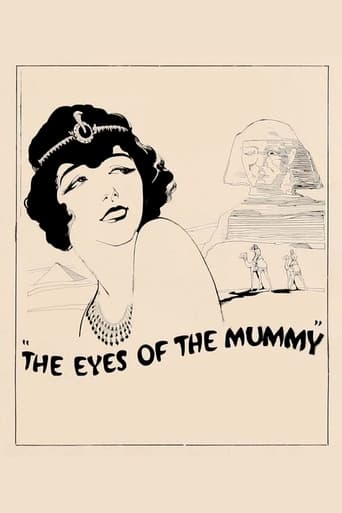

I'm surprised that I'd never heard of THE EYES OF THE MUMMY before I sat down to watch it as it turns out to be a superior and decent little chiller. It must be one of the earliest 'mummy' films out there even though the villain of the piece isn't a bandage-wrapped fiend but rather a sinister Arab character whose love for the film's heroine sees him pursuing her across continents.For a film made in 1918, THE EYES OF THE MUMMY feels surprisingly fresh and relevant. The lack of any real budget is quite obvious in the depictions of Egypt and the like, but the story packs plenty of incident into the running time and the characters are well drawn. Pola Negri is a good choice for female protagonist and convinces in her sympathetic part. Emil Jannings goes down the all-out pantomime route as the villain of the piece and is such a delight to watch. The climax goes down a surprisingly tragic route that more modern horror films would undoubtedly baulk at.
... View MoreIf, as promised, this movie was restored then the results are simply horrible.A company called National Film Museum gave this film to another company called Hypercube IIc, in New York to digitally restore the film.But, instead of a intelligent restoration what this people did was to tint every scene to red, probably with Photoshop, with disastrous results.Douglas M. Protsik music is as unremarkable as the bad restoration. His accompaniment does not enhance the images at all.In all, the available print shown on TCM is unwatchable and I had to turn off the TV set.
... View MoreI really had high hopes for this one. UFA produced this one, and most ufa films I've seem have been great. And with Emil Jannings I expected much more. But what I got was a bore. I did a crossword puzzle while I watched it. The acting was bad. The story was boring. And the whole movie was just blah. And where was the mummy? I can't believe this movie is considered horror.
... View More... but a tragedy... of sorts. The "Eyes Of The Mummy" refer to the eye-holes in a doorway with a face on it that Pola Negri looks out of to scare people out of the temple of Queen Ma. There is no mummy, there is no monster, there really is no horror. This is not a complaint, but this movie is often grouped in with monster movies merely because of it's title. It's easy to laugh at a film almost 85 years old, your grand kids and great grand kids will laugh at what you currently enjoy as well. The dance that Pola does may look strange to our eyes, but the desired effect was to be exotic. The acting is typically broad and melodramatic, appropriate to it's time. With the deterioration of many silent movies, we can sometimes be thankful that the actors seemed to be overacting, we can still see their expressions even when their films are fading away. Not Pola Negri's best work, or her worst. There must be a few different cuts of this film circulating. The one I saw was about an hour and ten minutes long, not the half-hour reported here or the forty-five minutes reported on the main page for this movie. I rather enjoyed the version I saw, maybe the shorter cuts leave too much out to fill the story out. Recommended if you enjoy the genre and it's stars. If you are looking for Halloween fare, stick with Universal's later horror classics, including..yes, the "real" mummy movies.
... View More